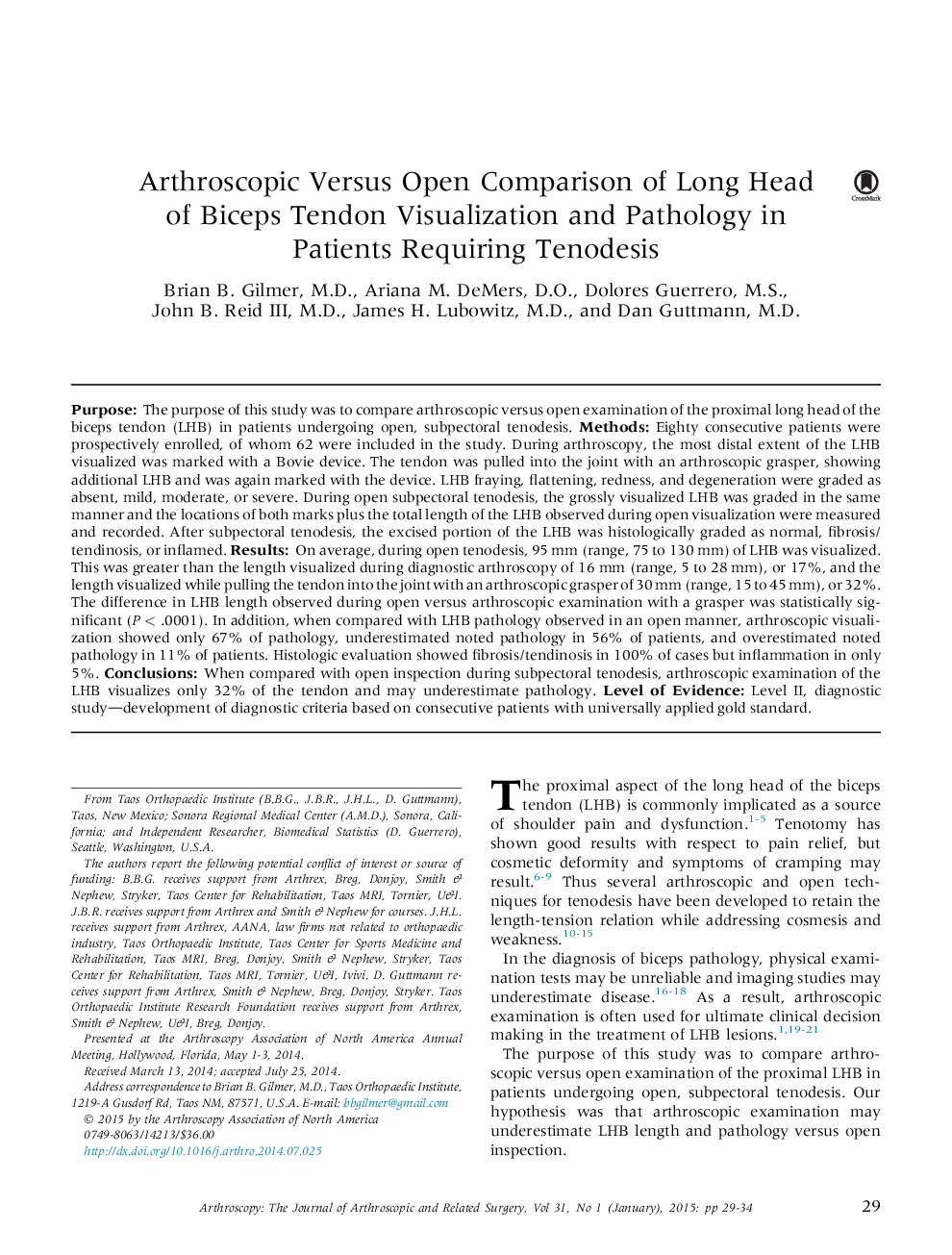| Article ID | Journal | Published Year | Pages | File Type |
|---|---|---|---|---|
| 4042721 | Arthroscopy: The Journal of Arthroscopic & Related Surgery | 2015 | 6 Pages |
PurposeThe purpose of this study was to compare arthroscopic versus open examination of the proximal long head of the biceps tendon (LHB) in patients undergoing open, subpectoral tenodesis.MethodsEighty consecutive patients were prospectively enrolled, of whom 62 were included in the study. During arthroscopy, the most distal extent of the LHB visualized was marked with a Bovie device. The tendon was pulled into the joint with an arthroscopic grasper, showing additional LHB and was again marked with the device. LHB fraying, flattening, redness, and degeneration were graded as absent, mild, moderate, or severe. During open subpectoral tenodesis, the grossly visualized LHB was graded in the same manner and the locations of both marks plus the total length of the LHB observed during open visualization were measured and recorded. After subpectoral tenodesis, the excised portion of the LHB was histologically graded as normal, fibrosis/tendinosis, or inflamed.ResultsOn average, during open tenodesis, 95 mm (range, 75 to 130 mm) of LHB was visualized. This was greater than the length visualized during diagnostic arthroscopy of 16 mm (range, 5 to 28 mm), or 17%, and the length visualized while pulling the tendon into the joint with an arthroscopic grasper of 30 mm (range, 15 to 45 mm), or 32%. The difference in LHB length observed during open versus arthroscopic examination with a grasper was statistically significant (P < .0001). In addition, when compared with LHB pathology observed in an open manner, arthroscopic visualization showed only 67% of pathology, underestimated noted pathology in 56% of patients, and overestimated noted pathology in 11% of patients. Histologic evaluation showed fibrosis/tendinosis in 100% of cases but inflammation in only 5%.ConclusionsWhen compared with open inspection during subpectoral tenodesis, arthroscopic examination of the LHB visualizes only 32% of the tendon and may underestimate pathology.Level of EvidenceLevel II, diagnostic study—development of diagnostic criteria based on consecutive patients with universally applied gold standard.
